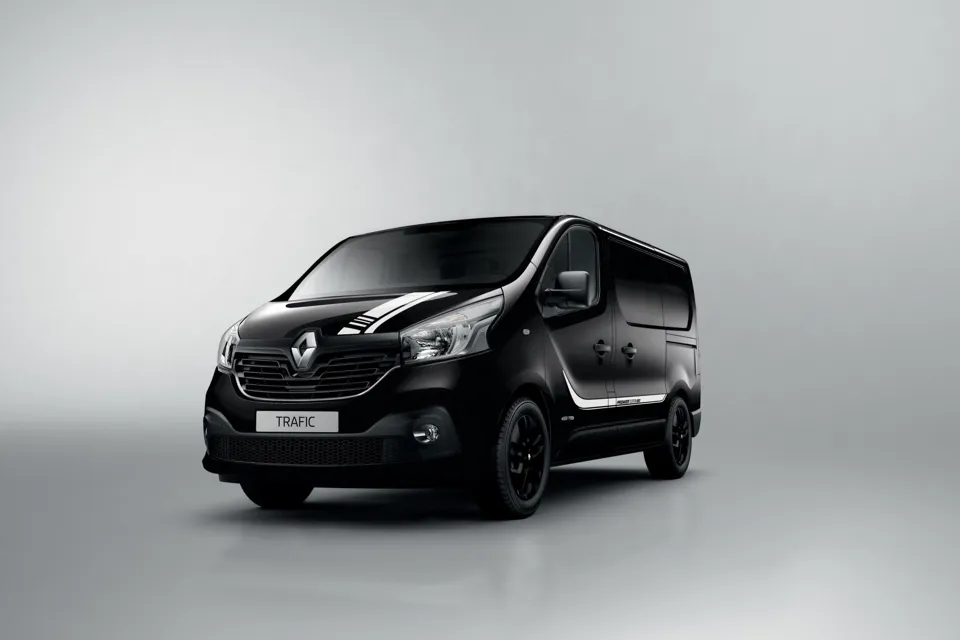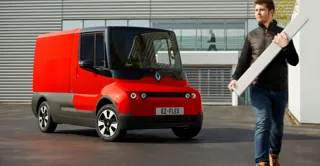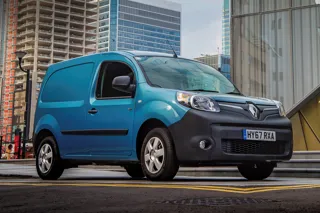Following its best year for sales, Renault’s Light Commercial Vehicles (LCV) division is launching facelifted versions of two key models: the Master and the Trafic.
The new vans were unveiled at the company’s Paris headquarters in April alongside a concept version of the new Kangoo ZE, which is expected to be revealed next year.
At the launch, Denis Le Vot, Alliance SVP, Renault-Nissan LCV Business Unit, said: “2018 was the best year ever for the light commercial vehicles business in terms of sales, with 34% growth compared with the previous year. In 2019, we will continue the renewal of our line-up to meet the expectations of our customers.
“Thanks to Renault Pro+ development and our connected services offer, we will keep developing accurate and innovative solutions to support our professional clients’ business development.”
More than 620,000 Renault LCVs were sold in 2018, making the brand a leader in the European market.
In the UK, it still has work to do. Last year, Renault was only seventh on 15,543, 10,000 behind firth place Citroën and more than 110,000 behind market leader Ford.
Referring to Renault’s Drive The Future plan, Le Vot said the company wants to become a global leader in LCV by 2022 and expects to increase its sales by 40% in that time.
Electric vehicles will be key to Renault’s future success, but it will also leverage its alliance partners Nissan and Mitsubishi.
In the UK, the new Trafic and Master will be available in September. Both feature Euro 6d-Temp engines and a host of updates to improve driver comfort, efficiency and connectivity.
The new Master has undergone the most noticeable change, with an all-new front end featuring a larger front grille and extended bonnet. The new look is said to give the van more road presence by being more truck-like and the larger grille also allows for better airflow to the engine bay, which is required to meet the new emissions regulations that become mandatory for all new vehicles launched from September.
It also benefits from a new dashboard with an integrated sat-nav screen.
To improve safety, a digital rear-view mirror is available that utilises a rear-mounted camera. There is also a crosswind assist system, blind spot monitor and optional autonomous emergency braking across the range.
A revised 2.3-litre diesel engine is used in all models with varied power outputs. The most powerful model develops 180PS and 400Nm. Renault says the new engine is “significantly” more efficient that its predecessor.
The fully-electric Master ZE will be available with a 33kWh or a new 57kWh battery, providing up to 80 miles of real-world range.
The new Renault Trafic has also been updated and now includes a new 2.0-litre diesel engine, with power outputs of 120PS, 145PS and 170PS. All the new engines meet the latest Euro 6d-Temp emissions standard.
Fuel economy is expected to be improved by up to 10% with the new powertrains.
Renault said it will continue to offer the 1.6-litre diesel engine with 95PS in a base model Trafic aimed at fleets.
For the first time, the Trafic will be offered with an EDC automatic gearbox.
Alongside some minor styling tweaks, the Trafic also features new full-LED headlamps, a new key and the option of keyless entry.
There is no autonomous emergency braking option available as part of the update. Renault said the system – which is an option on the Master – won’t be available on Trafic in this update.
An electric version of the Trafic is also in the pipeline. Renault confirmed it will offer electric versions of all its LCVs by 2022.
Prices and specifications for both new vehicles are expected to be announced at their official launch in June.
Next year, the new Kangoo will be revealed in production form. The concept version suggests the vehicle will take on a sportier demeanour with sleeker and more car-like styling than the current one.
While the concept previews an all-electric Kangoo, we expect there will also be diesel and petrol versions offered from launch.






















Login to comment
Comments
No comments have been made yet.